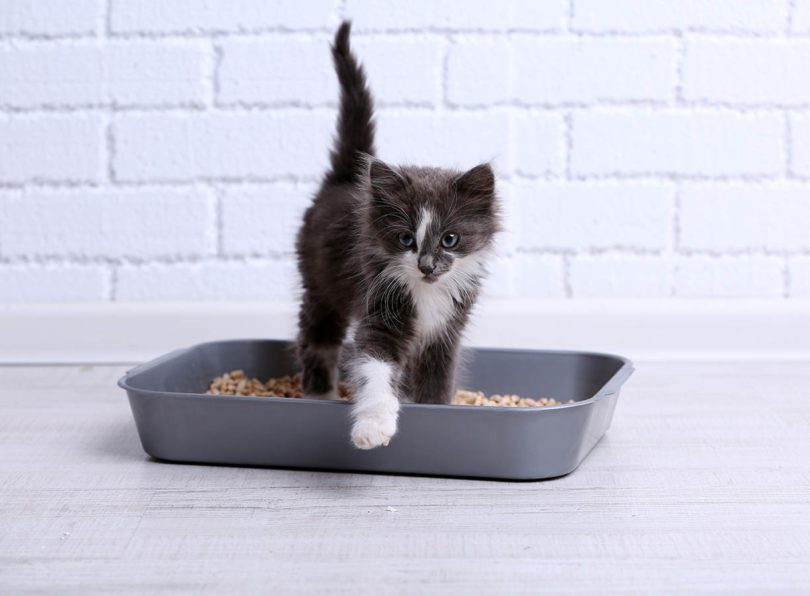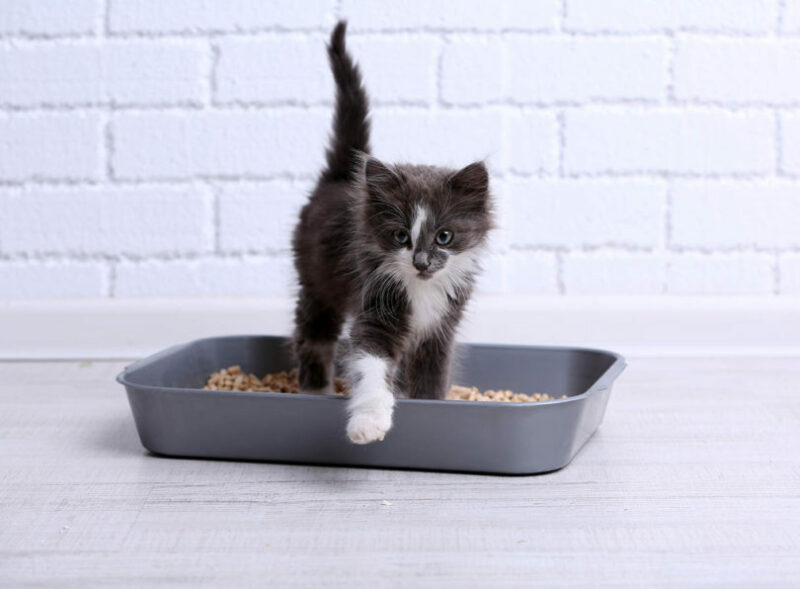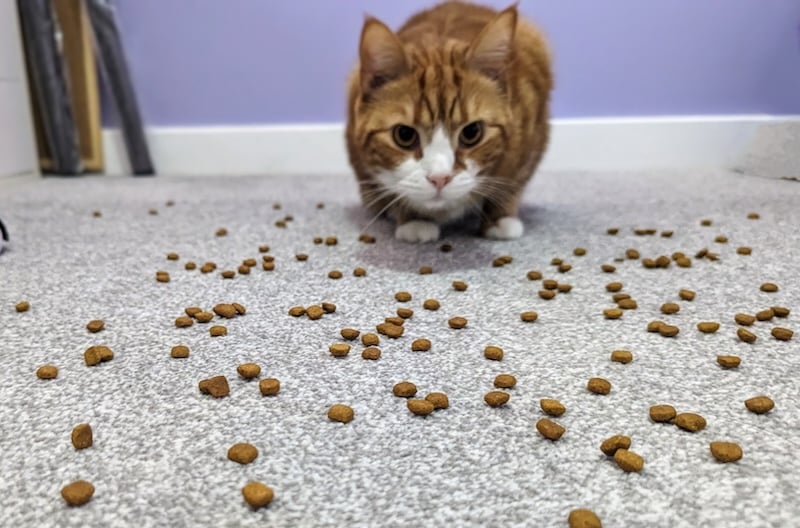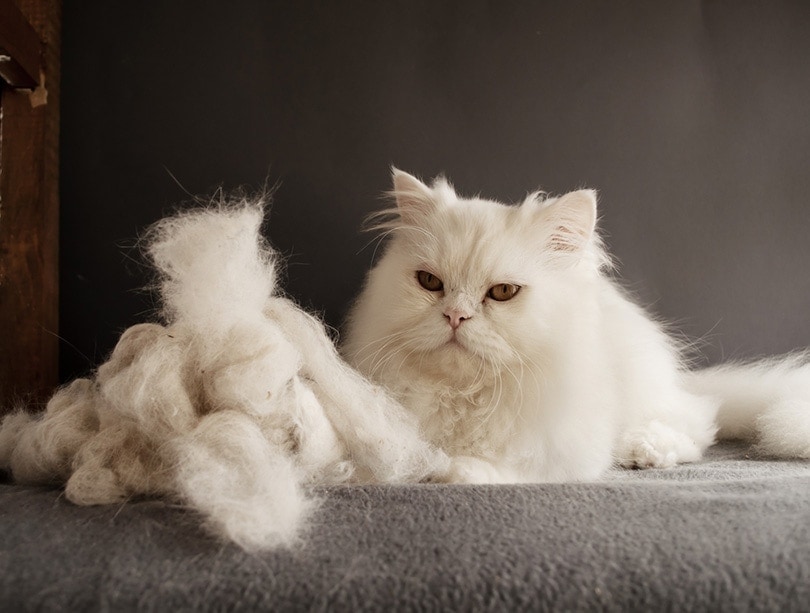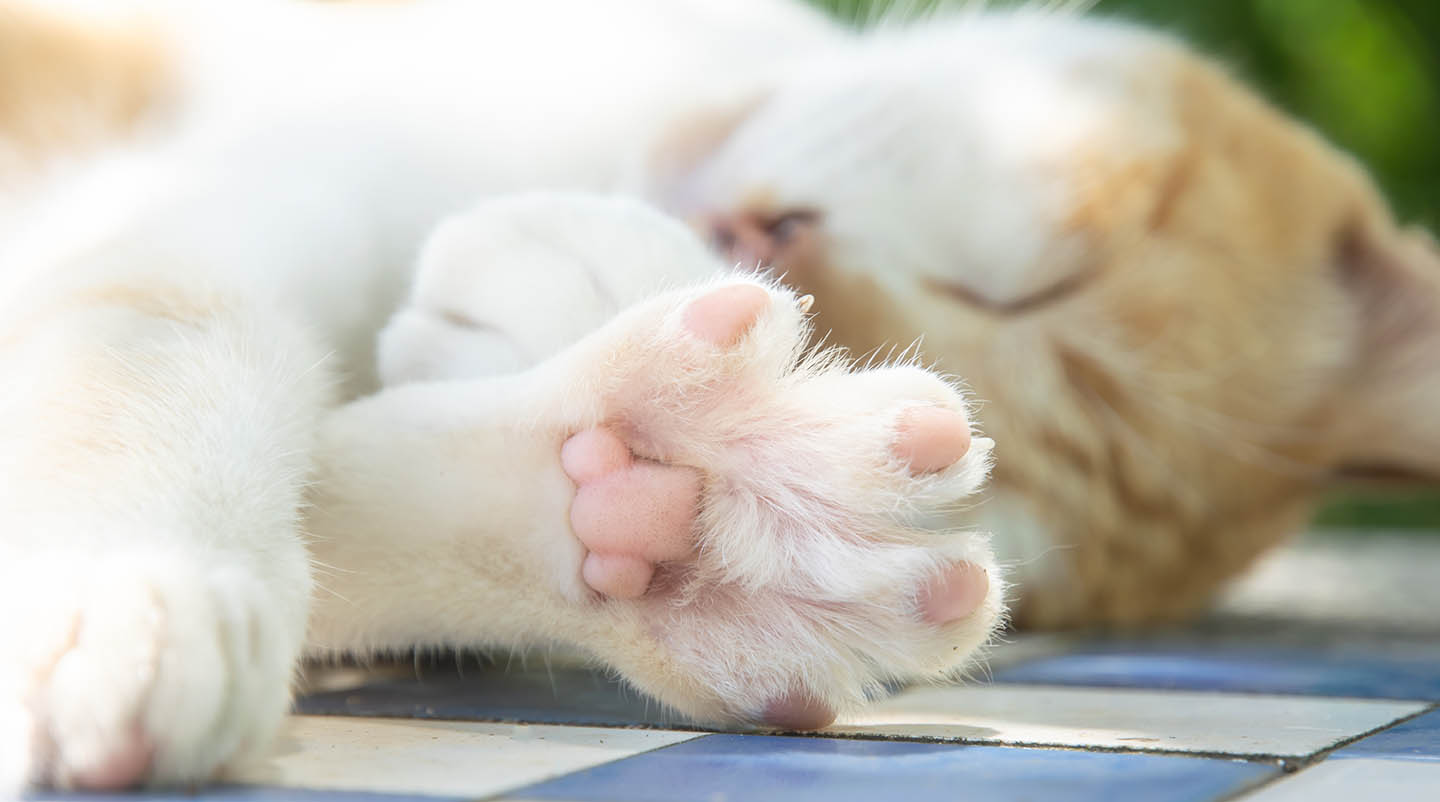If your cat is going to live inside, it’s absolutely essential that they’re properly trained to use the litter box. Cat urine has an incredibly strong and pungent odor that you don’t want wafting through your home. The easiest way to avoid this is with proper litter training. Luckily, cats are smart creatures and they’re already inclined to use the litter box; they just need a little help to learn how.
Litter training is something that almost all cats go through. It’s a relatively simple process, but it should be started the moment that your new kitten arrives at your home. In this article, we will walk you through each of the steps you must take to properly litter train your kitten. We’ll even discuss what to do when your cat has an accident, as well as the supplies you’ll need and an outline of a proper maintenance routine. By the end, you’ll be confident and ready to litter train your new feline friend.
Click to skip ahead:
- Necessary Supplies
- Cleaning Frequency
- What if Your Cat Has an Accident?
- How to Litter Train a Kitten

Necessary Supplies
Before you can start litter training your kitty companion, you’ll need to gather a few supplies.
Litter Box
Obviously, the litter box is one of the most important supplies you’ll need to litter train your kitty. Cats prefer a deep box that you can fit at least 3 inches of litter inside. The litter box must be large enough for your cat to walk inside and turn around without touching the top or sides. They must also be able to dig in the litter without touching clumped waste or the sides of the box. Placement of your litter box is also important. Cats prefer for their litter box to be located in a quiet, calm place that’s easily accessible.
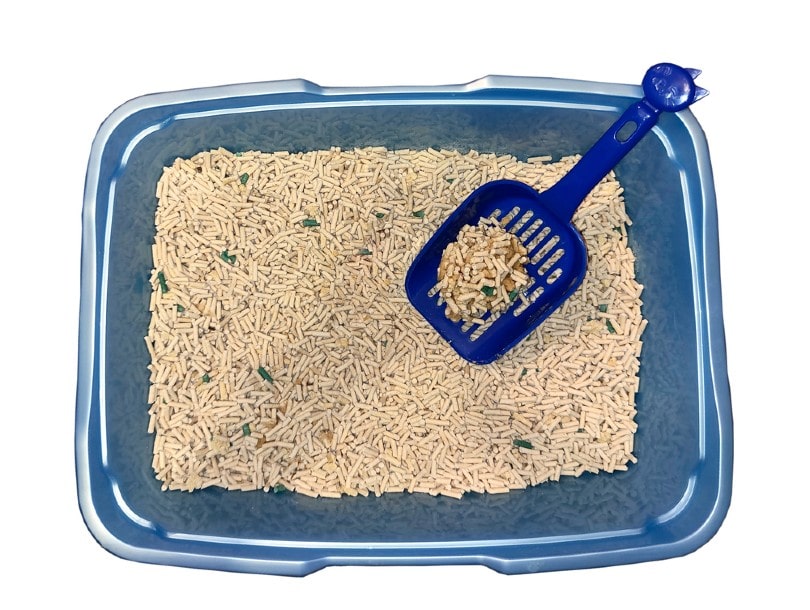
Kitty Litter
Once you start scoping out different kitty litters, you’ll notice that there’s no shortage of options. In fact, there are so many options that it can be pretty daunting. Some are cheap, others are quite expensive. They can be made out of a variety of materials, including clay, pine pellets, paper, and more.
Some cats are very particular about their litter. Others will be fine with just about any litter. But in general, most cats prefer unscented litter. Fine grit litters that clump easily are usually recommended.
Rewards
You’ll want to use positive reinforcement to help train your kitty to use the litter box. This means that you’ll want to keep some treats or toys on hand to use as rewards for when your kitty does a good job. You’ll need to wean your kitty off of the treats after they become proficient at using the litter box, but using a small treat or toy as a reward can create positive associations in your cat’s mind regarding the use of the litter box.

Litter Scoop
Cleaning and maintenance of the litter box are necessary. Natural cleaners like vinegar can be used when the litter box needs a full cleaning, but the most common cleaning you’ll perform is scooping out the clumped litter and waste with a litter scoop.
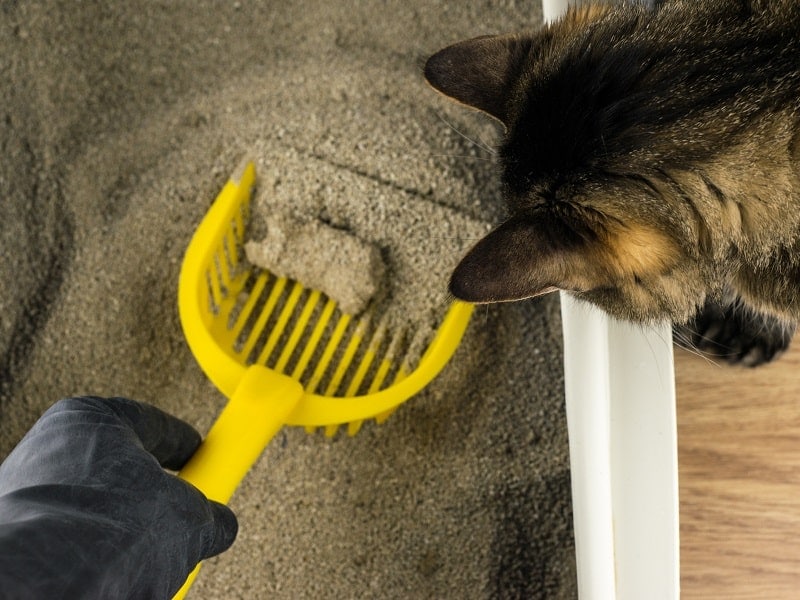
Enzyme Cleaner
During the process of litter training, your cat will likely have a few accidents. This is to be expected and it’s not a big deal. However, cat urine has a very strong odor that will stick around long after you clean it up. This can entice your cat to return to that area to urinate again. You’ll need to prevent this by completely eliminating the odor using a powerful enzyme cleaner such as Nature’s Miracle Just For Cats Stain and Odor Remover.

Cleaning Frequency
Your cat’s litter box will require daily, weekly, monthly, and annual cleaning. Each day, you’ll need to scoop out the clumps and waste. Some cats prefer for this to be done even more frequently. Each week, you’ll need to empty all the litter and replace it with a fresh batch.
Once per month, you’ll need to completely clean the litter box. Remove all of the litter and scrub the box with mild soap or white vinegar before refilling it and returning it to its normal place. And every year, it’s a good idea to replace the litter box with a new one.
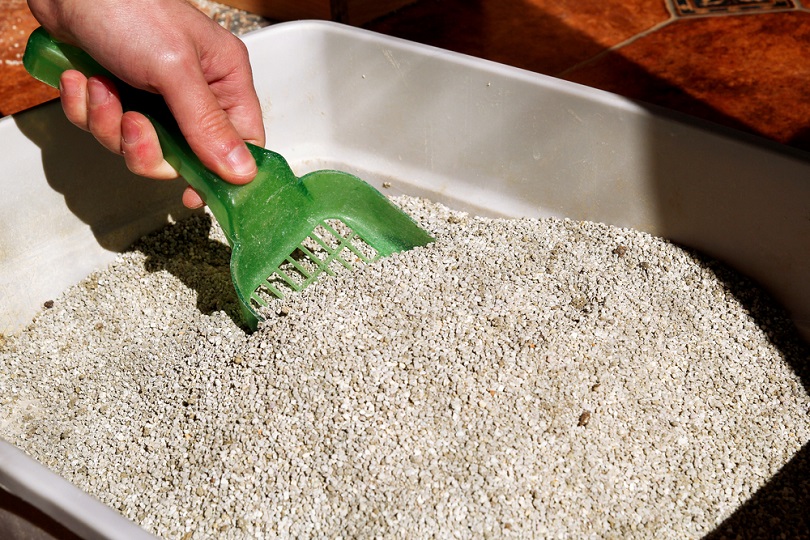
What if Your Cat Has an Accident?
It’s almost a given that your cat will end up having an accident somewhere in your house during litter training. When this happens, you mustn’t punish your cat. Instead, you should use an enzyme cleaner on the area to eliminate the odor of waste. Then, ensure that your cat’s litter box is clean and easily accessible. Unless the accidents become a regular habit, there’s no reason for alarm.

How to Litter Train a Kitten
Before you bring your kitten home, you should have gathered all of the necessary materials and determined where you will place the litter box.
1. Present the Litter Box
The moment your cat arrives at your home, let them see the litter boxes. They should already be in place. This will allow your cat to start understanding where they’re at. If you move the litter box after presenting it to your cat, it could become confusing.
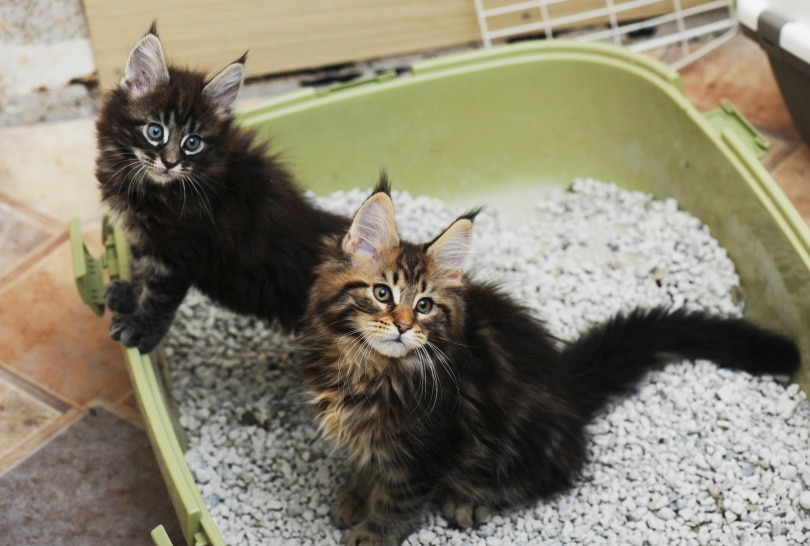
2. After Meals and Naps
Once your cat has seen the litter boxes and knows where they are, it’s time to start putting your cat inside the litter box at appropriate times. You’ll want to put your cat in the litter box directly after meals and naps. And of course, if you see your cat sniffing around or crouching like they need to go, then pick them up and place them in the litter box.
3. Rewards and Praise
You must create a positive association with the litter box. So, whenever your cat uses the litter box, shower it with praise. You can also provide a toy or treat that will further increase the positive association, though you’ll need to eventually wean your cat off of these rewards.
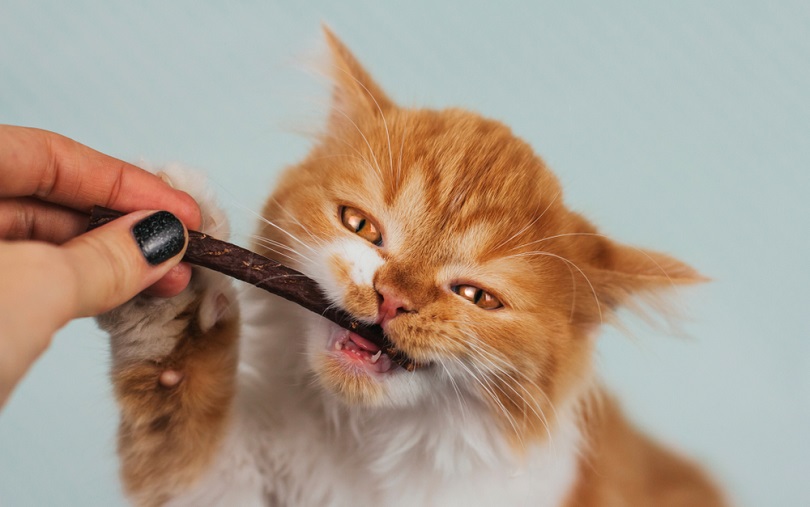
4. Forgo Punishment
Make sure you don’t punish your cat for accidents. This can lead to stress and anxiety, which will only worsen the problem. If you punish your cat, they won’t associate with the accident they had. Instead, they’ll just become fearful of you — the opposite of what you want.

Conclusion
Litter training is a simple process that all house cats go through. It requires a little bit of diligence, but anyone can do it. Make sure you gather all of your supplies before you bring your kitten home. That way, you can start litter training immediately. Once your cat is fully litter trained, they’ll be a much more rewarding pet and you’ll have a much cleaner, odor-free home.
- See also: Where to Put Your Cat’s Litter Box
Featured Image Credit: Africa Studio, Shutterstock

